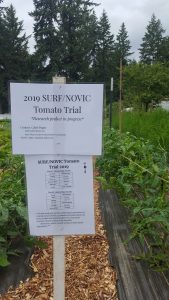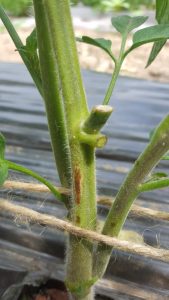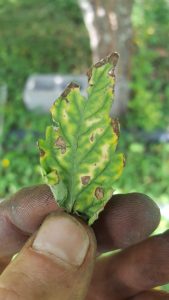
I always like to start arranging my thoughts by looking at what the weather was like for the day. Just as it is with the plants of this world, our bodies (and our minds!) are closely connected to the weather patterns of our area. Todays weather, much like most of the previous week, it was indecisive and spontaneous. The day would go from being overcast with a slight chill to blazing sunlight for a time and then on to a slight drizzle that would last only a few minutes; what nice weather it was.
The tomatoes are very much in tune with the weather and have benefitted from the warmer temps and the sporadic, light rains. A lot of new growth was added this week and it made for some busy days of pruning and observing the changes that are taking place with the plants. As is it stated in my NOVIC Tomato Variety Trial Protocol, I began my leaf curl observations that should be done on a weekly basis as the plants begin putting on vegetative growth. There were a few varieties that distinctly stood out from the others: the Damsel, PILU KS, JTO 1021 and 1007, as well as LB 21-7-4 the varieties that showed any signs of leaf curl, the rest of the varieties showed little to no signs of leaf curl.
I did some pruning and weeding within the lower areas of the plant to allow for more air circulation, and while doing this I saw a fair amount of aphids and Flea Beetles on ≈70% of the plants. I also observed signs of a fungal disease that I believe to either be Early Blight (Alternaria solani) or Septoria Leaf Spot (Lycopersicon) on two separate individuals of the PILU KS variety. I plan to ask someone that knows more about fungal diseases than myself and will report back to you. The afflicted leaves were removed and destroyed so that the spores cannot spread any further.
Here are a few photos of what I observed:
In the photo of the leaf you can see small concentric circles within the brown areas, it is these concentric circles that make me think that it could be Early Blight rather that the Leaf Spot; we should, however, be able to see the same concentric circles on the stem lesion but I don’t and this is why I want to get a second opinion.
From here I will be adding another line of trellising for the tomatoes and keeping a close eye out for any changes that may happen, especially with regard to the fungal pathogens and the aphids. Enjoy the week!



Leave a Reply